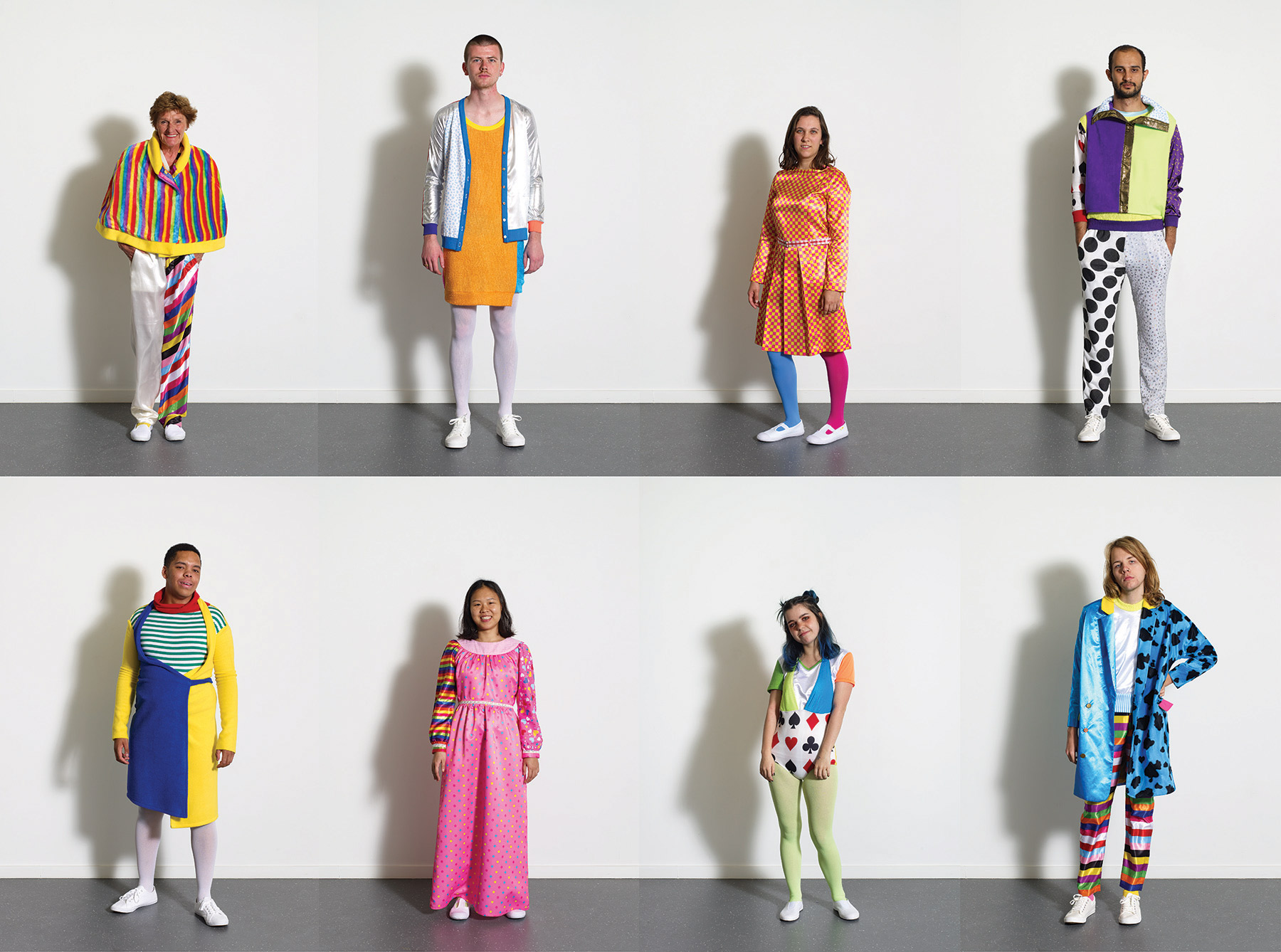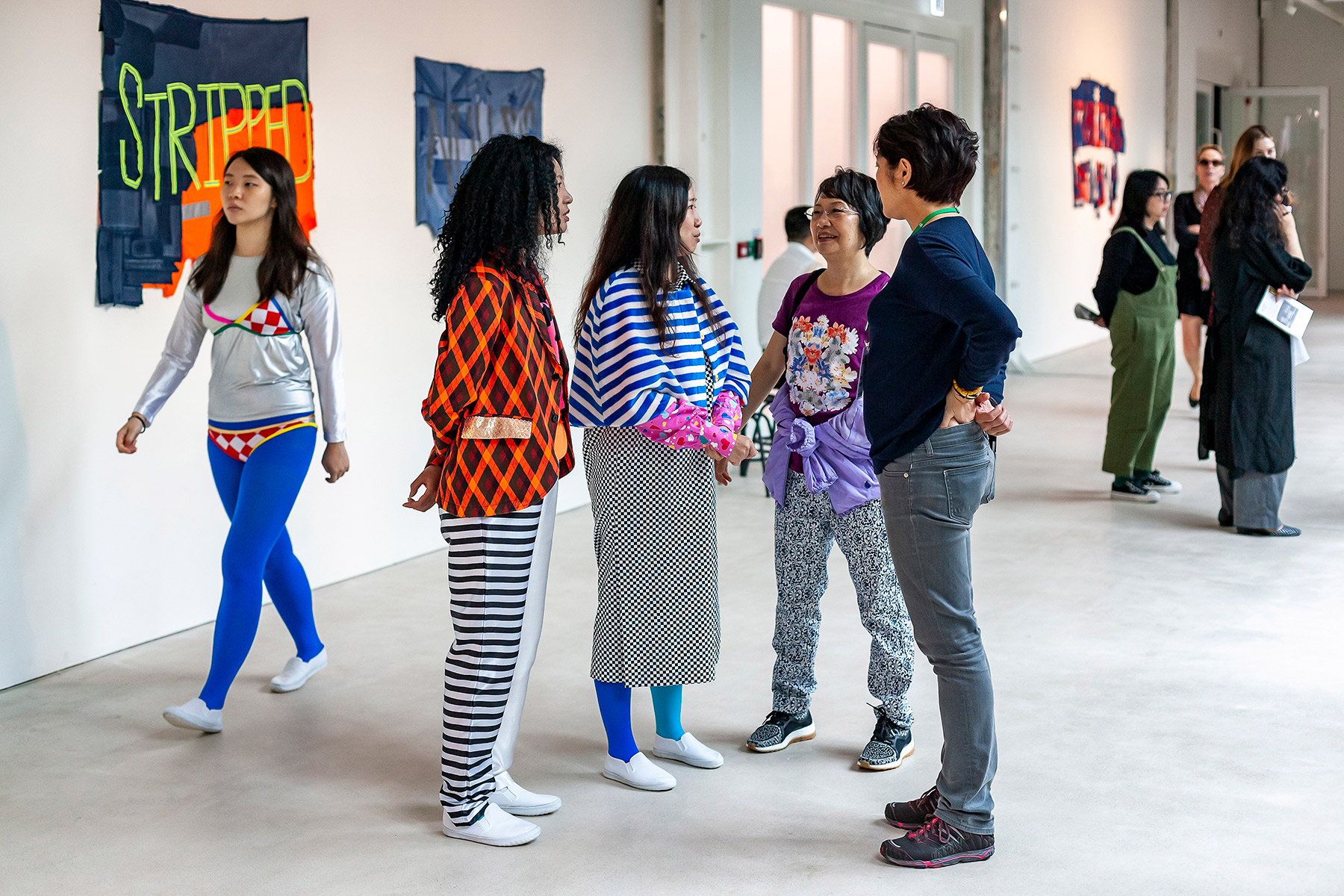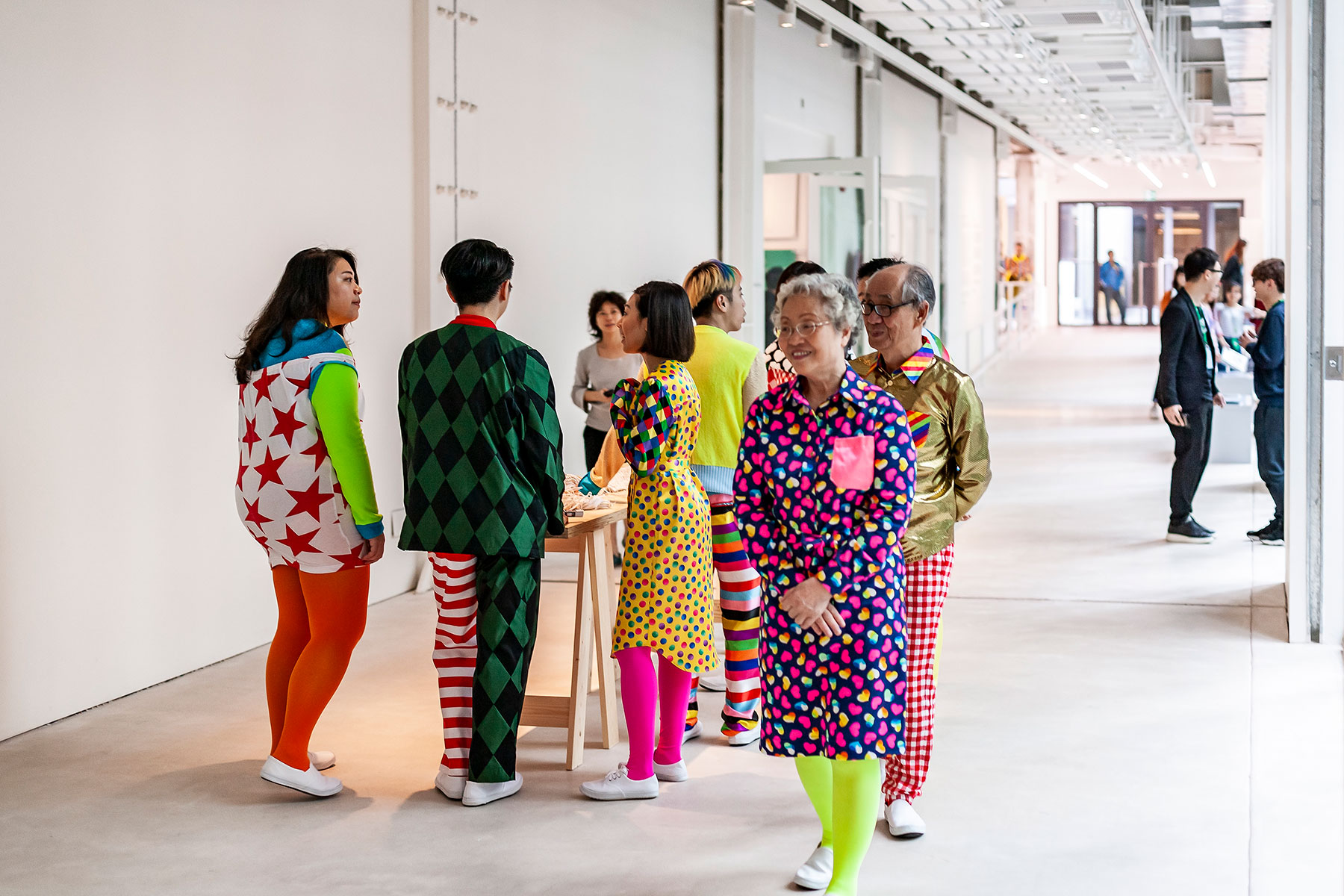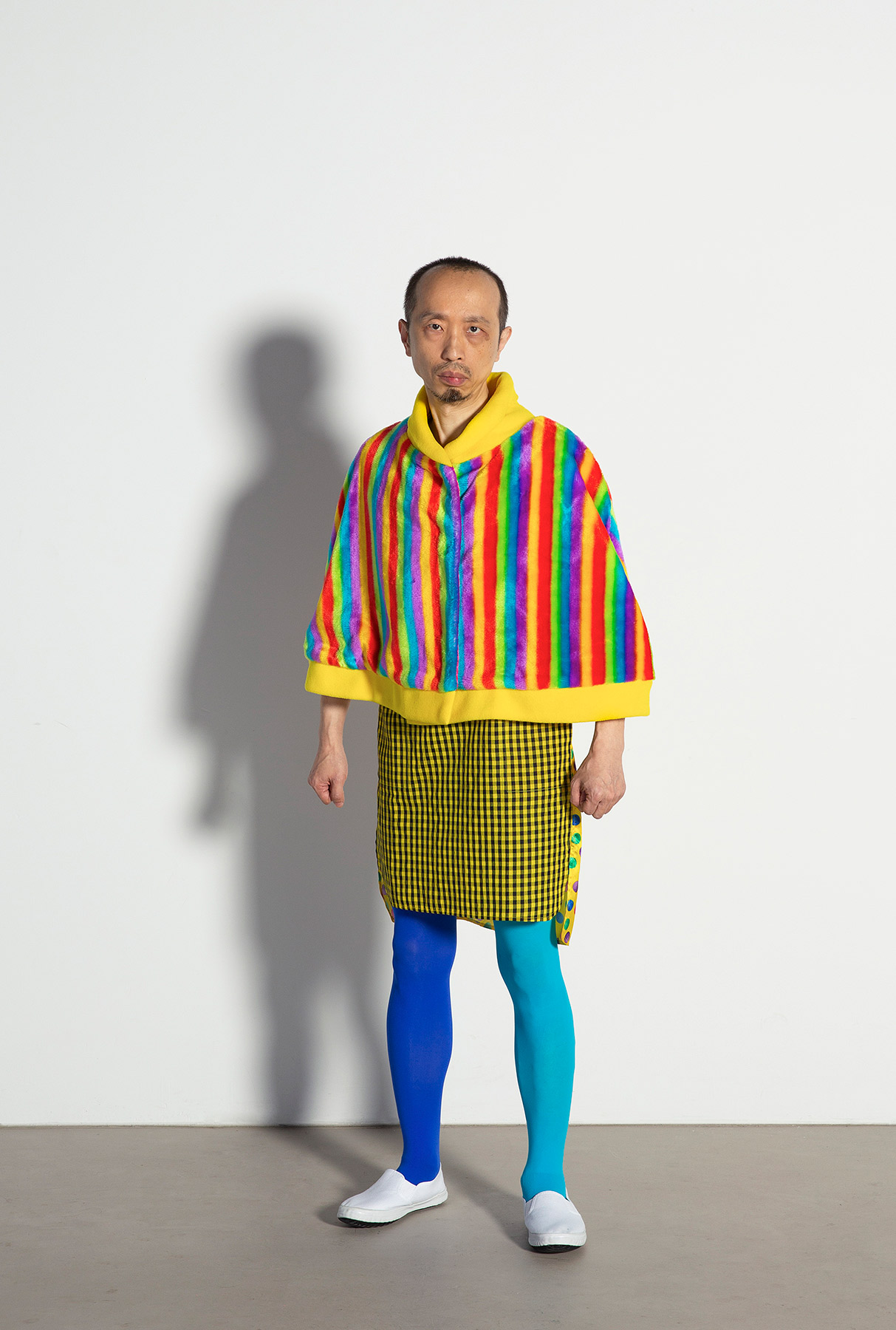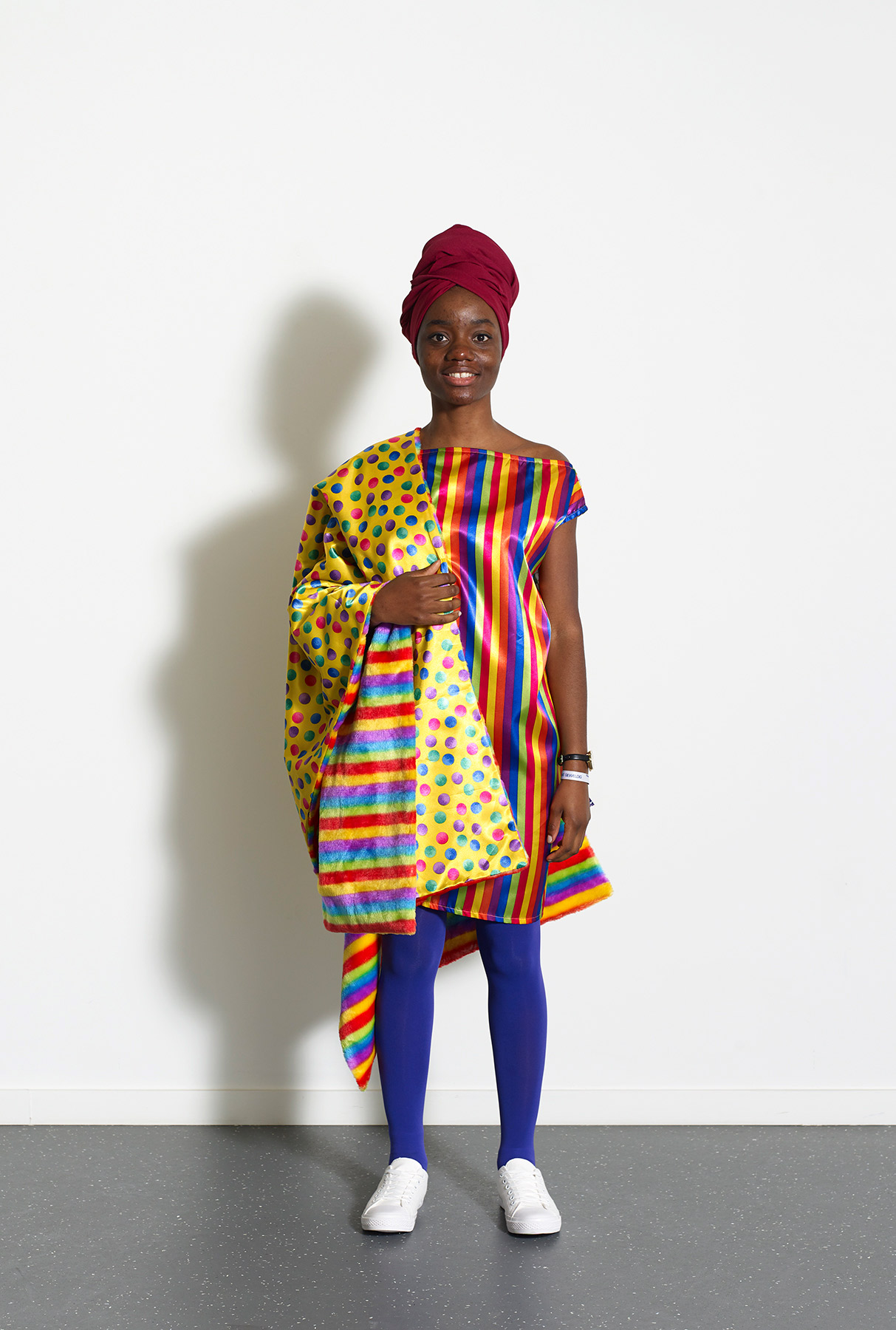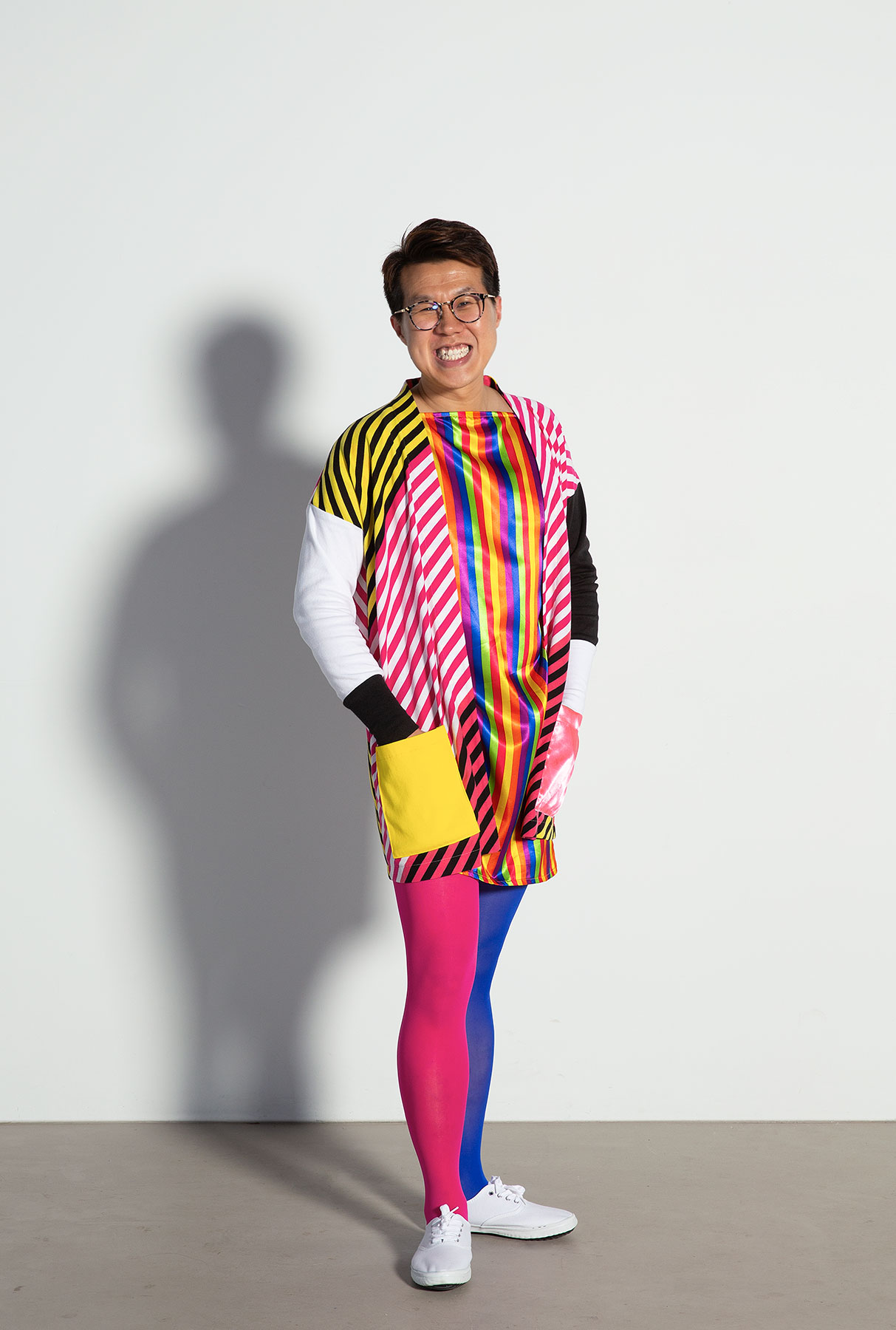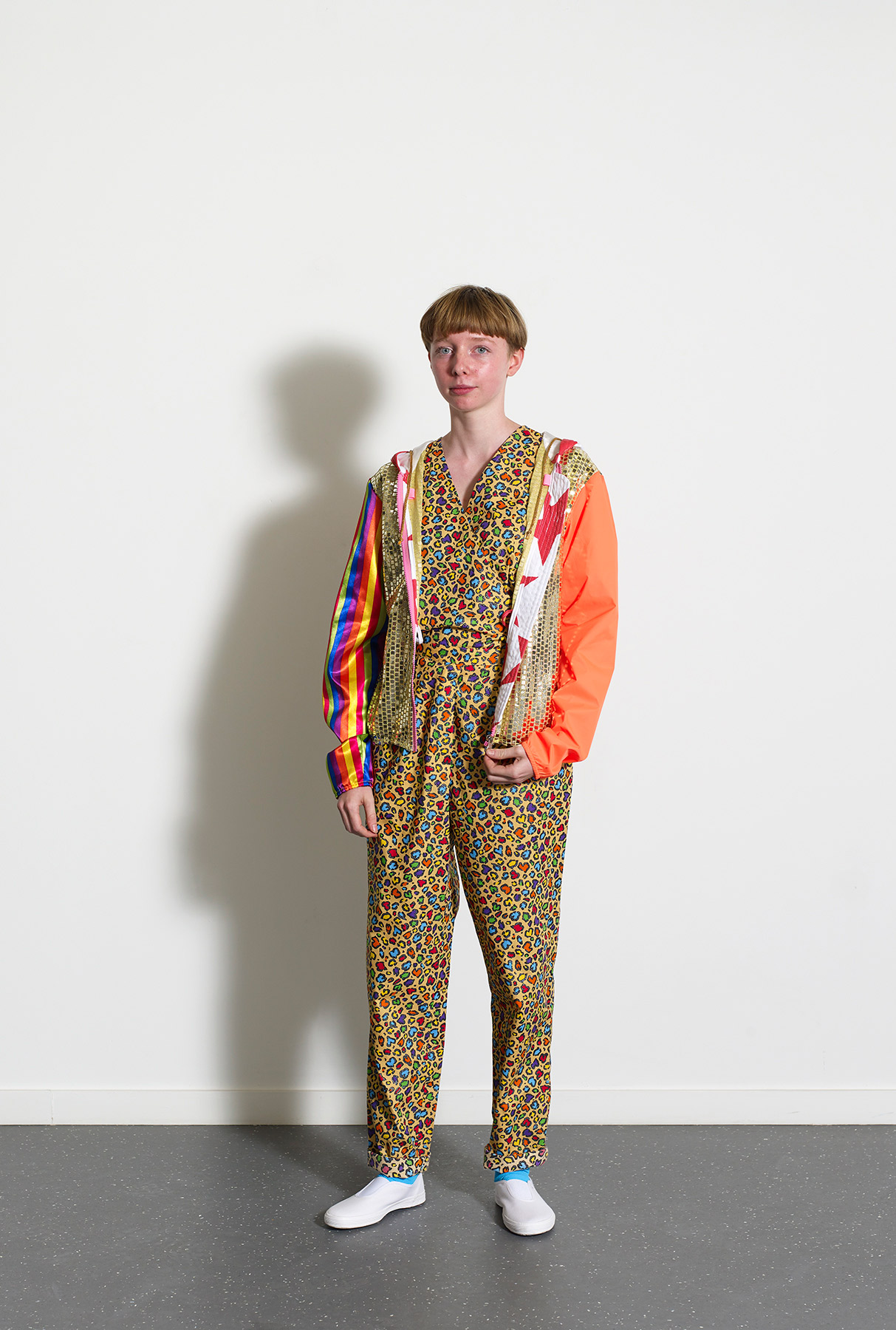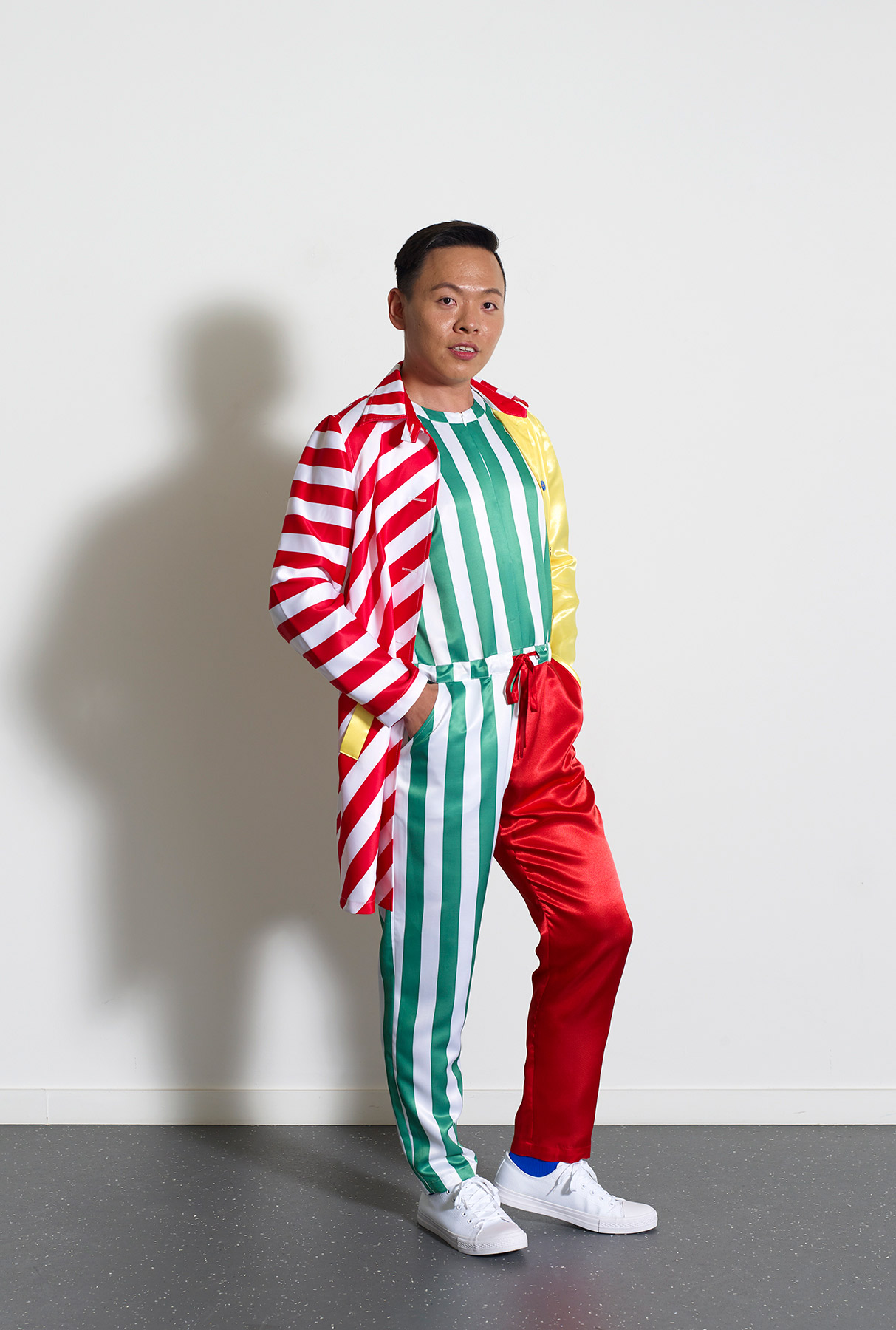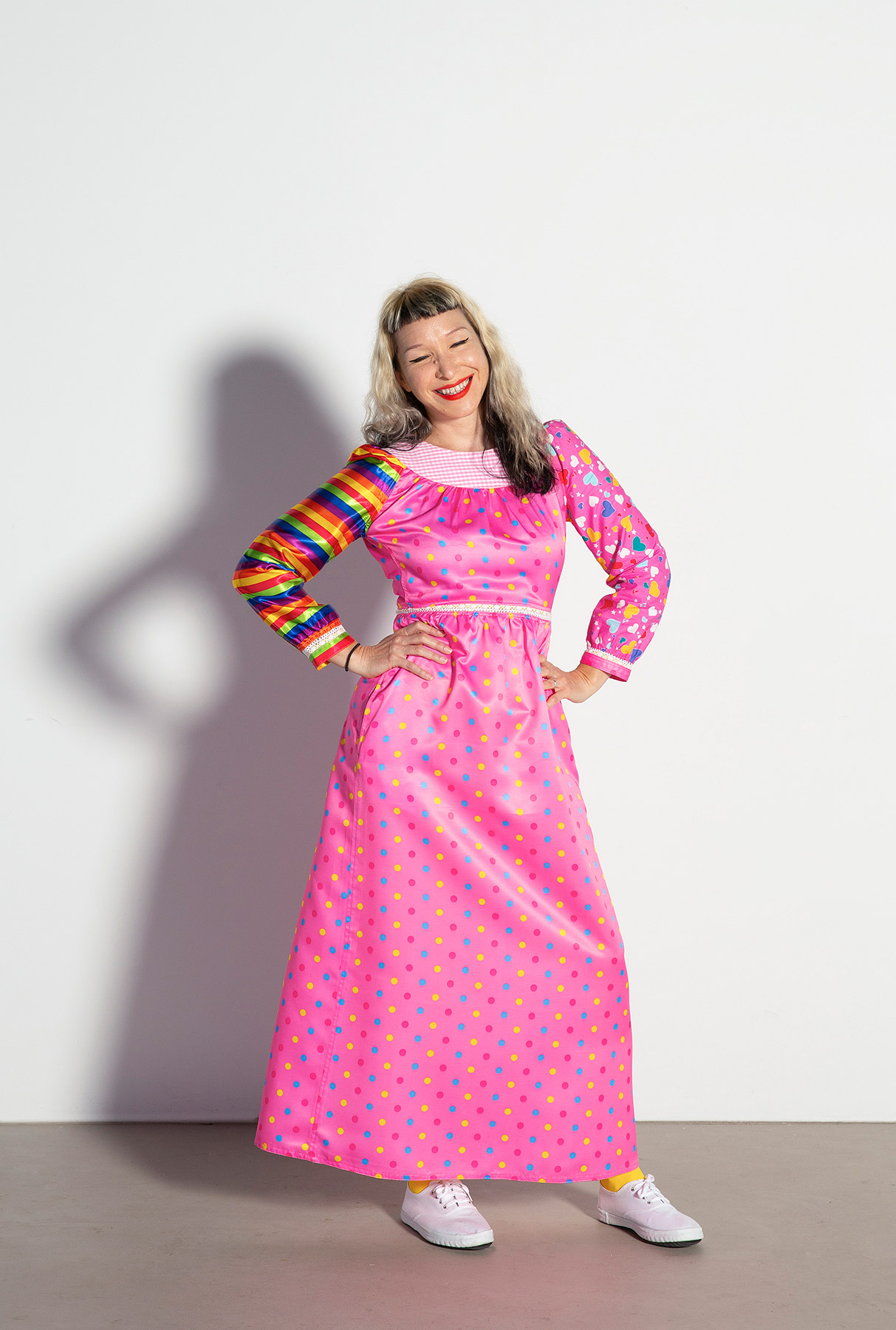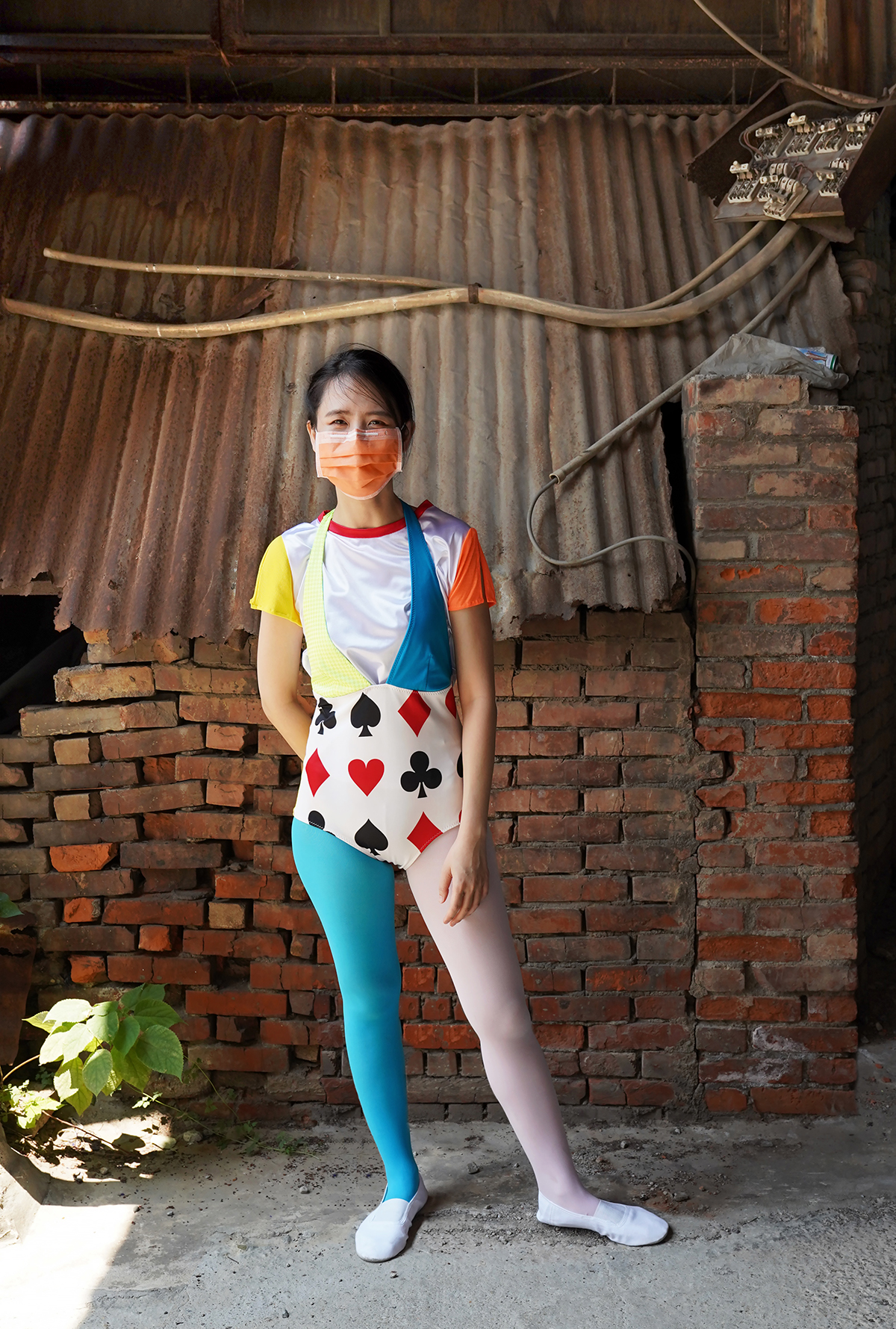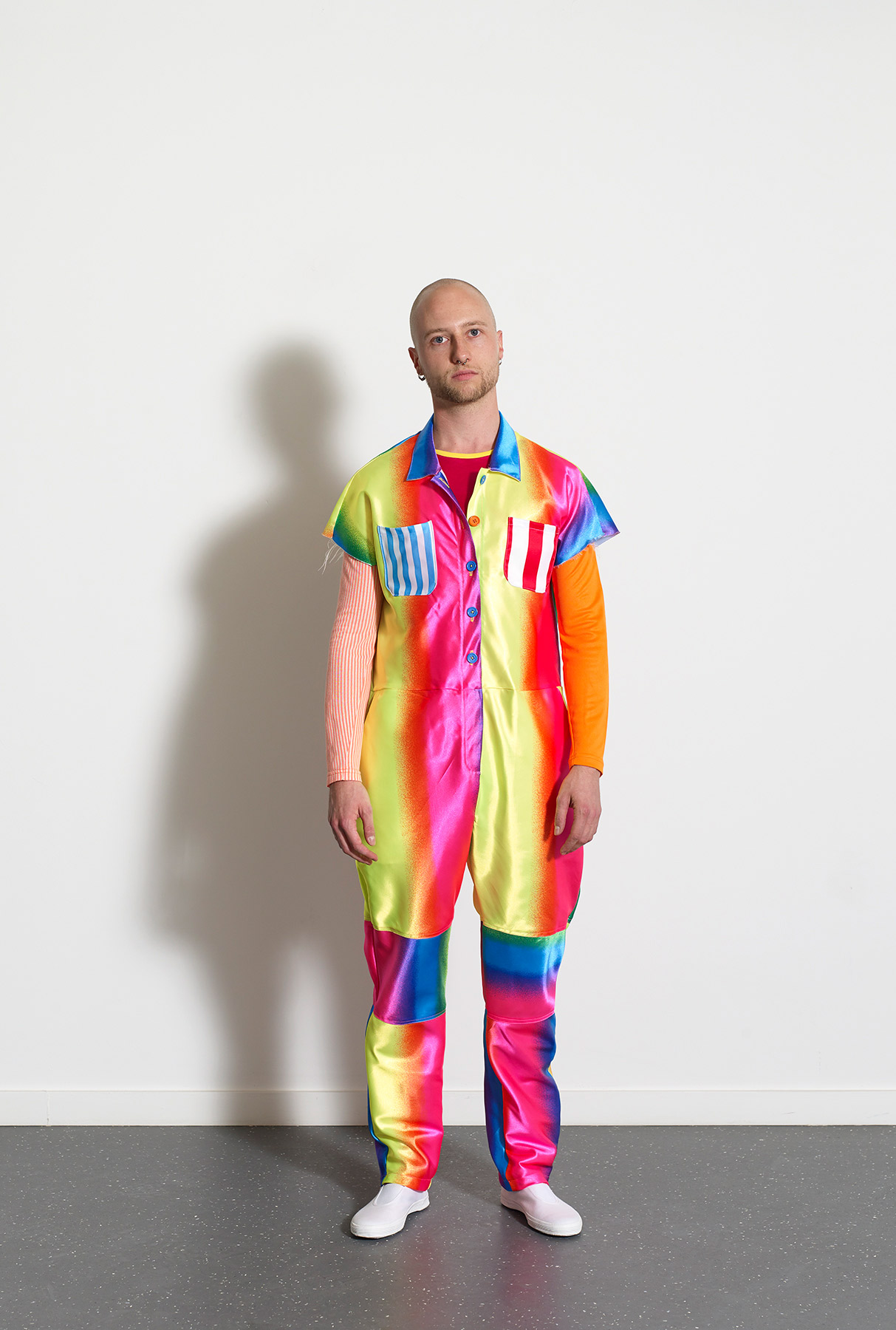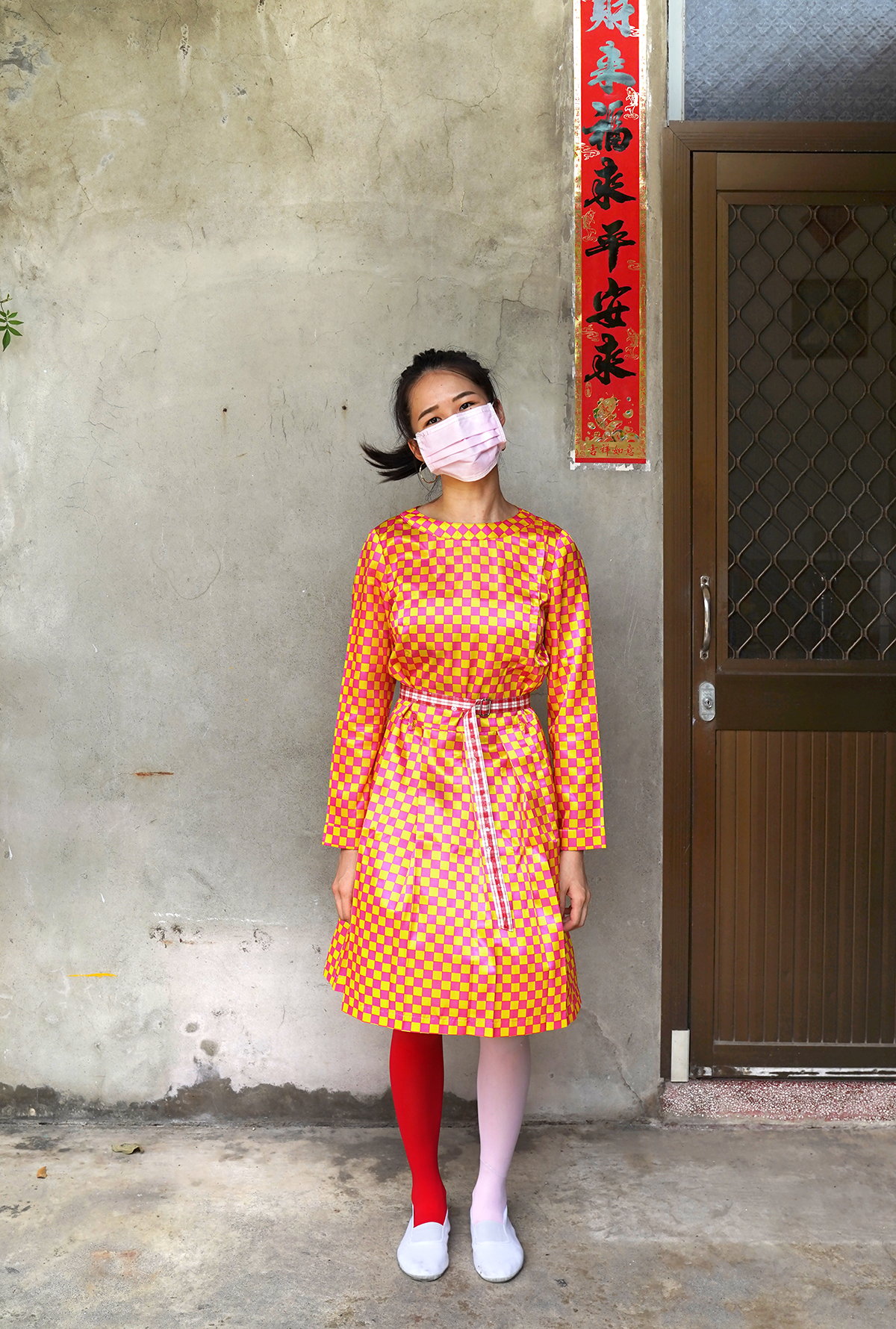
We tend to have an intimate relationship with our clothes as objects that constitute our daily public appearance and aid in performing social roles.
In pieces and parts originates from a moment of personal loss, following the passing of the artist’s mother. The remaining clothes became a catalyst to examine the meaning embedded in everyday garments. Clothing, in this context, operates not only as material culture but as a mnemonic device, an archive of intimacy, social identity, and embodied memory. In pieces and parts examines how clothing structures both private subjectivity and public performativity.
For this work, the artist’s entire wardrobe is reproduced using brightly colored fabrics reminiscent of mass-produced entertainment or clown costumes. These exaggerated, hypervisible garments accentuate the fluidity of identity, underscoring the role of clothing as a tool for navigating social scripts and expectations.
During the exhibition’s opening, 70 non-professional, local performers from diverse backgrounds wear these garments while circulating informally within the audience. Stripped of narrative or character, the act of wearing becomes a shared, unscripted performance, wherein the garments act as mediators of proximity, recognition, and estrangement.
The installation evolves through three registers: the intimate (replicated garments tied to a singular subject), the collective (activated through participation), and the archival (portraits of performers and packed garments). After the performance, the photos of the participants are exhibited on the wall, and the folded costumes are stored in three open suitcases placed on the floor, signaling not only mobility and repetition, but also the unresolved status of material memory and the contingent nature of cultural meaning.
In pieces and parts moves from the deeply personal, replicas of a single wardrobe, toward a shared experience across time, place, and identity. The garments become agents of encounter, challenging fixed social codes and hierarchies, and creating temporary forms of community and reflection.
